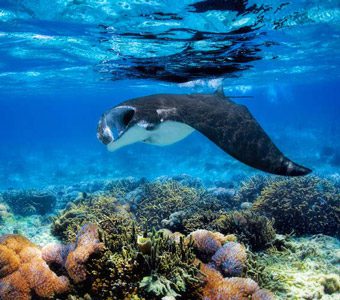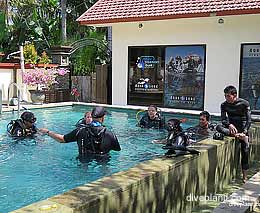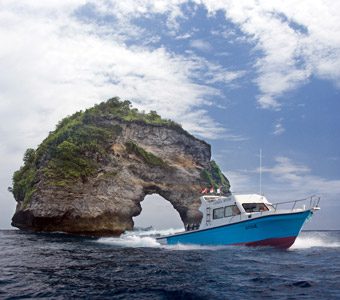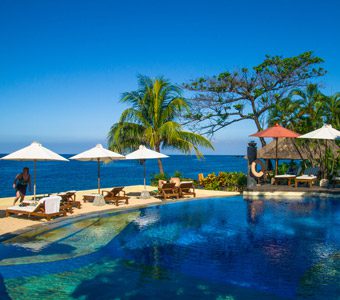| Site Type: | Mega fauna |
| Depth: | Top: 16M Median: 20M Bottom: 14M |
| Location: | Half way along the south western edge of Nusa Penida. |
Manta Point Nusa Penida actually has two spots known for mantas, called rather imaginatively Manta Point 1 and Manta Point 2. There is little reason to dive either of these two spots unless you are specifically going there encounter manta rays– which you will! As shown by this video, they move so slowly and gracefully, you have plenty of time to stop and observe – and reduce your exhaling!
The currents are relatively strong, there can be surge, the water is cold (21°C) as opposed to the 29°C you can expect on every other dive around Bali and Nusa Penida, and the visibility is 10-15m rather than the +30m you can expect everywhere else.

But that is exactly why to can expect to see mantas at Manta Points.

Not surprisingly we did – eight in fact. There are a couple of distinct manta cleaning stations, though at the time we were there, there were so many groups of divers, the mantas weren’t hanging around but cruising through, waiting I suspect until the area had cleared.
Down in the sand you find a few lesser rays, like this blue spotted ray trying to hide in the sand.

As there is no reef per se, there a few other fish, and as there are quite a few divers around they usually scarper as soon as they spot you.

One exception was this Butterflyfish, which I have yet to identify; it appears to be a cross between a vagabond and threadfin butterfly.

The knack is to look around continuously, as they don’t just cruise along the bottom. Quite often you’ll see them over head. Keep your eyes on other divers too – often they’ll be watching mantas that are heading your way.

Manta Point Nusa Penida is usually dived with Crystal Bay and Nusa Lembongan as a triple dive day trip from Bali. Manta Point and Crystal Bay can be more challenging due to the currents and cold water, and Nusa Lembongan is the relaxing, warmer, shallower dive usually done after a long lunch break and surface interval.







